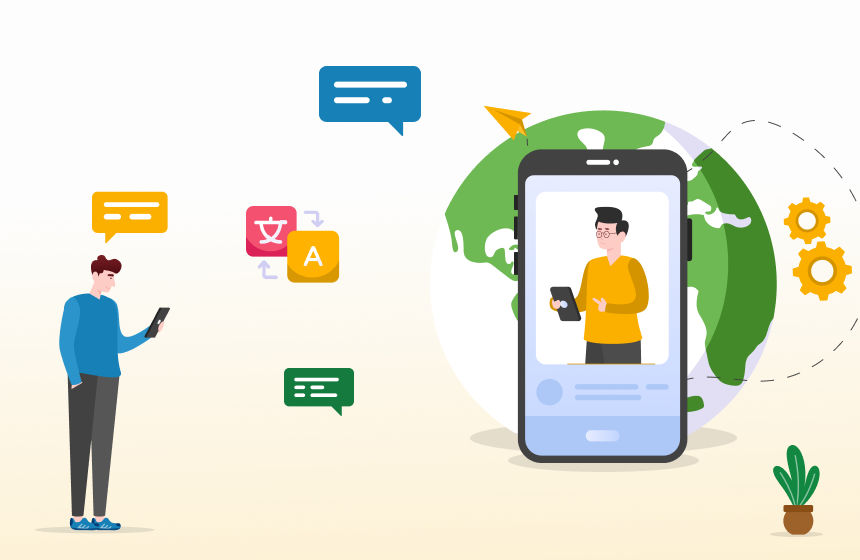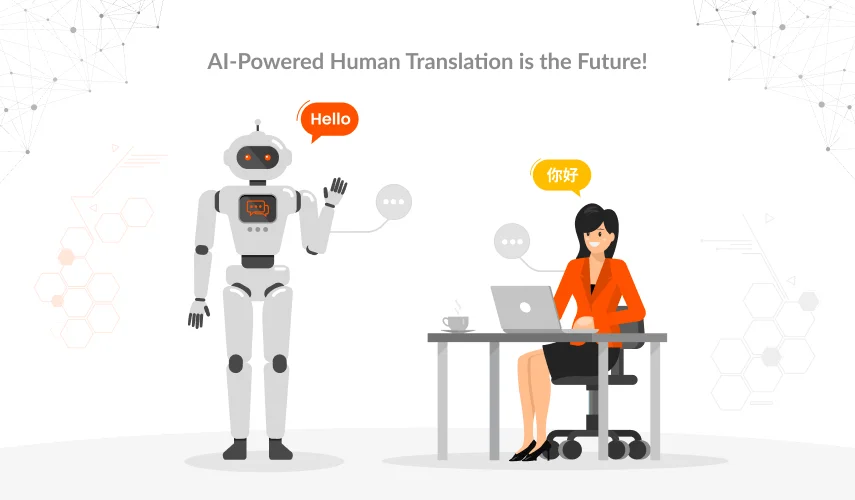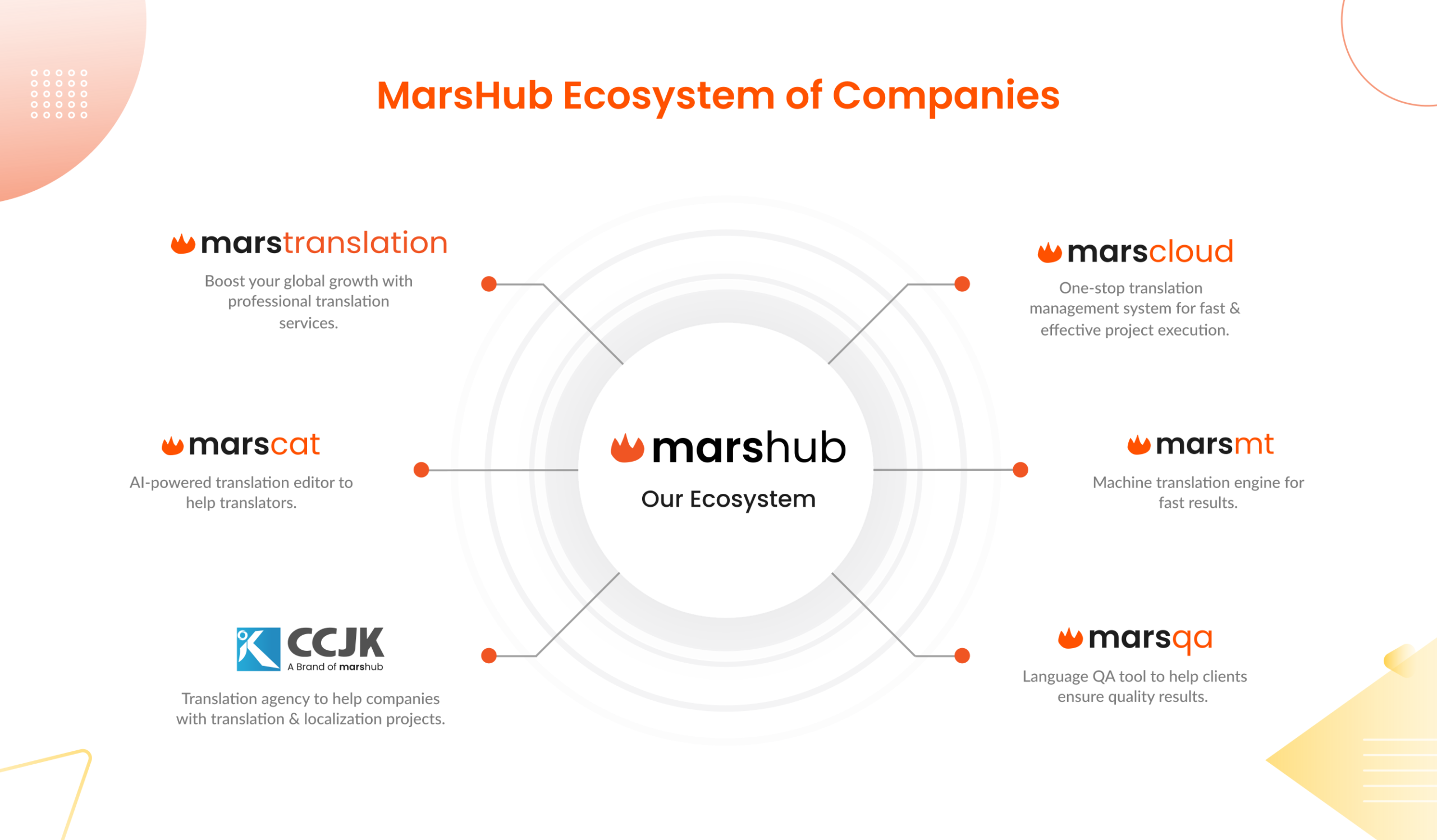Natural language processing (NLP) technology is now becoming a significant part of AI-powered systems and machines. NLP is an amazing technology that allows humans to interact with AI systems more efficiently. It allows the computer systems to recognize human speech, process the information, understand the context, and respond accordingly. This technology is also backing many communication systems and processes worldwide. Especially, when it comes to multilingual communication, the popularity of NLP systems is continuously growing.
In this article, we’ll explore the significance of NLP in AI systems and how it is influencing global communication.
What is Natural Language Processing?
Natural language processing is an AI-powered technology that enables computer devices and machines to comprehend and understand human speech. As we know human language is very different from machine language. Humans communicate in words, whereas machines can only understand binary numbers. Advanced AI algorithms are used to enable computer machines to recognize speech and text.
Researchers have done extensive studies on speed recognition and natural language processing that have made it possible now for machines to comprehend human languages. It has not just improved machine-to-human communication, but human-to-human communication has augmented significantly using NLP technology. This technology allows AI devices to create a sense of information entered by humans and respond quickly.
Significance of NLP in Global Communication
Thanks to NLP technology, computers can now understand human language faster and respond to human inquiries more naturally. The use of NLP technology is increasing across diversified industries including healthcare, aeronautics, national security, and IT. Following are some of the major uses of NLP technology that have evolved the way humans communicate with machines and each other.
1. NLP in Search Engines
Google, as well as other search engines, use NLP technology to improve the user’s online searching experience. Now, there is no need for the user to type the phrases in the search bar, they can enter voice queries and get the desired results. Not just that, even when the user is typing a phrase in the search bar, as soon as he starts typing the suggestion for the most relevant results start to appear. Search engines also use NLP technology to recognize speech and textual information to provide relevant responses to the user. The use of NLP technology in search engine results has personalized the online search experience of users. Google has always kept the user experience on priority, speech recognition technology significantly enhances online users’ search experience.
2. Customer Expectations Analysis
Better than any customer relationship manager, or customer service personnel, NLP-powered machines can detect the right expectations of your customers like no one else. While communicating with customers, these systems store the information entered by customers and detect their emotions. This data allows businesses to develop detailed insights into customers’ expectations of the brand. It would also help you make more informed decisions about your businesses considering the demands of customers. So, NLP devices can allow you to enhance your customer’s satisfaction and communicate with them more effectively.
3. Multilingual Communication
NLP systems are enabling multilingual communication on a larger scale. Globalization has increased the need for multilingual content translation to enable effective communication between businesses and foreign audiences. Professional multilingual translation systems also use NLP technology to process text written in different languages and translate them. Source text is translated into the targeted language, where NLP technology is used to comprehend the text to be translated.
Global businesses and language service providers use this technology to fulfill their content translation needs. The user enters the written content into the MT system, and the system generates automated translations within seconds.
4. Virtual Assistant Devices
One of the major deployments of NLP technology can be seen in virtual assistant devices. Siri and Alexa are two examples of virtual assistant devices that use NLP technology to perform different tasks based on voice commands. These devices process the information inserted in the form of human speech or text and respond accordingly. Advanced NLP algorithms process the languages and understand the context to provide relevant responses.
Along with NLP technology, these devices use AI, machine learning, and RPA technology to comprehend the complex data inserted by humans. Virtual assistant devices have enabled human-to-machine communication and it is opening up doors to innovations and developments.
5. Chatbots
NLP technology is taking customer communication to the next level through advanced AI-powered chatbots. A chatbot is a computer program that communicates with customers naturally and responds to their queries without any human intervention. This program processes human speech, comprehends the information, and replies accordingly in textual form. Businesses use chatbots for their websites, and social media to provide 24/7 support to their customers. Slack and Facebook messengers are two common examples of applications that allow their users to generate automated responses to customers’ messages.
Modern chatbots use advanced algorithms that allow them to learn from previous conversations and get wiser with time. The more conversations these chatbots have with humans, the better they get at responding more naturally to human inquiries.
Moreover, you must program the chatbots with the company’s unique business logic, so they produce relevant responses aligned with your brand persona.
Future of NLP Technology
From commanding Alexa to perform a task to searching online, we’re interacting with NLP technology without even noticing it. AI algorithms are becoming wiser and wiser, and the only way to communicate with these algorithms is NLP. According to recent research, the NLP market is expected to grow by 20.3%, which is $35.1 billion by 2026. Gartner stated that the use of NLP is likely to bring transformational business benefits, and the suite of NLP technology will dominate the business and healthcare industries.
ChatGPT is a new future trajectory of NLP that is developed by Open AI. It is a multi-tasking program that can perform various tasks, such as translating text, extracting information, and communicating with humans, and it could even create funny poems. Using this technology, you can write software programs in different coding languages. Many pieces of research are conducted on conversational models to allow machines to better connect with humans.
Wrapping Up!
NLP technology is a significant aspect of AI that is emerging as a driving force to enable future developments and innovations. From improving human-machine communication to creating a multilingual brand, the use of NLP seems quite dominant in different domains. Using this technology, businesses can improve their customer online experience, and explore new revenue models. This technology is also playing a major role in the evolution of global communication processes and models. NLP has significantly improved the way humans interact with machines, as well as human-to-human interactions.
The ability of NLP technology to process large volumes of content, comprehend its meaning, and respond in a more relevant and natural manner makes it a game-changer for AI future developments. So, as far as communication is concerned, NLP is facilitating communicators, around the world, to improve communication with their customers, clients, employees, patients, users, and business partners.



